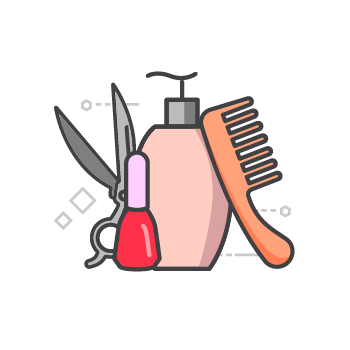If You Are Wondering How to Prevent Razor Burns …These Tips Might Help
by Carolyn Lee Nov 6, 2023

Anyone who shaves can get razor burn on the face, legs, or under the armpits shortly after shaving. Your skin might appear irritated and red with burning, itching, tenderness, small red bumps, and stinging, creating discomfort. We have a few helpful tips that might reduce the risk of razor burns after shaving.
Is there a difference between a razor bump and a razor burn?
A razor burn can result from shaving with a razor and appears like red blotches or streaks across the skin. However, razor bumps are ingrown hairs that can develop after shaving or other hair removal techniques. These hairs start to grow back into the skin and may curl and turn inward instead of up and out. When new skin cells grow over the hair, they can become trapped and cause a bump.
What causes razor burn?
Razor burn can result from using a dull or old razor, shaving too quickly, repeatedly shaving one area, using products that irritate the skin, and shaving against the direction of your hair. Shaving without a lubricant (shaving gel, cream, oil, or water) and using a razor clogged with soap, hair, or shaving cream can also cause razor burn.
Tips to prevent razor burn.
Exfoliate. Regularly exfoliate your skin to get rid of dead skin cells. When you exfoliate the skin, it can also help prevent ingrown hairs. Be gentle when exfoliating to avoid irritating the skin before shaving.
Warm up the skin. Ensure your skin is clean by washing it with warm water. Soft skin and hair can reduce the likelihood of the blade dragging and tugging the skin. Warming up the skin also helps improve the razor’s ability to cut the hair cleanly and quickly.
Use gentle products. After warming and cleansing the skin, apply a shaving gel, cream, or oil to create a thin, nourishing layer over the skin. Use a shaving brush for better coverage when applying products. The oil or cream shields the skin from the blade and further softens the hair, so there is less resistance.
Razor hygiene is crucial. Replace your razor regularly, and ensure you use a sharp, clean blade when shaving. Aim to get several uses out of one razor head. Avoid using a razor beyond three weeks or replace the blade after using it eight times to limit the risk of using a dull razor or one that has collected too much dust and bacteria. Clean and store your razor upright in a dry space after shaving, with a plastic cover on top between shaves after it’s dried.
Use a shaving technique that works. Keep the strokes light and short to avoid putting too much pressure on the blade. Let the blade glide over your pre-shave layer and the shaving cream without making multiple passes. Shave against the grain of your hair growth to get a close shave. If you typically get ingrown hairs, consider shaving with the grain instead to limit the risk of trapped hairs. Remember to rinse the blade with warm water between each stroke.
Cool and soothe the skin afterwards. Rinse your face with cold water after you shave to remove debris and close the pores. You can use a cleanser for a refreshing wash. You can also splash cold water on your face and apply a post-shave toner to disinfect and cleanse the pores to prevent redness. Use a post-shave balm afterwards to nourish the skin.
Do you need to see a doctor?
While razor burn is uncomfortable and annoying, it resolves with time. You can relieve and speed up the healing process by applying soothing products that protect and moisten the skin. Aloe vera, tea tree oil, wheat germ, vitamin E, yeast extract, green tea, caffeine, jojoba seed oil, shea butter, and evening primrose oil can help combat redness and peeling, calm and repair the skin.
You can consider contacting your doctor if you notice an infection, have difficulty doing ordinary tasks, or have a severe blister or rash that continues for a few weeks.
Sources: WebMD, Medical News Today, GQ, and Healthline.








